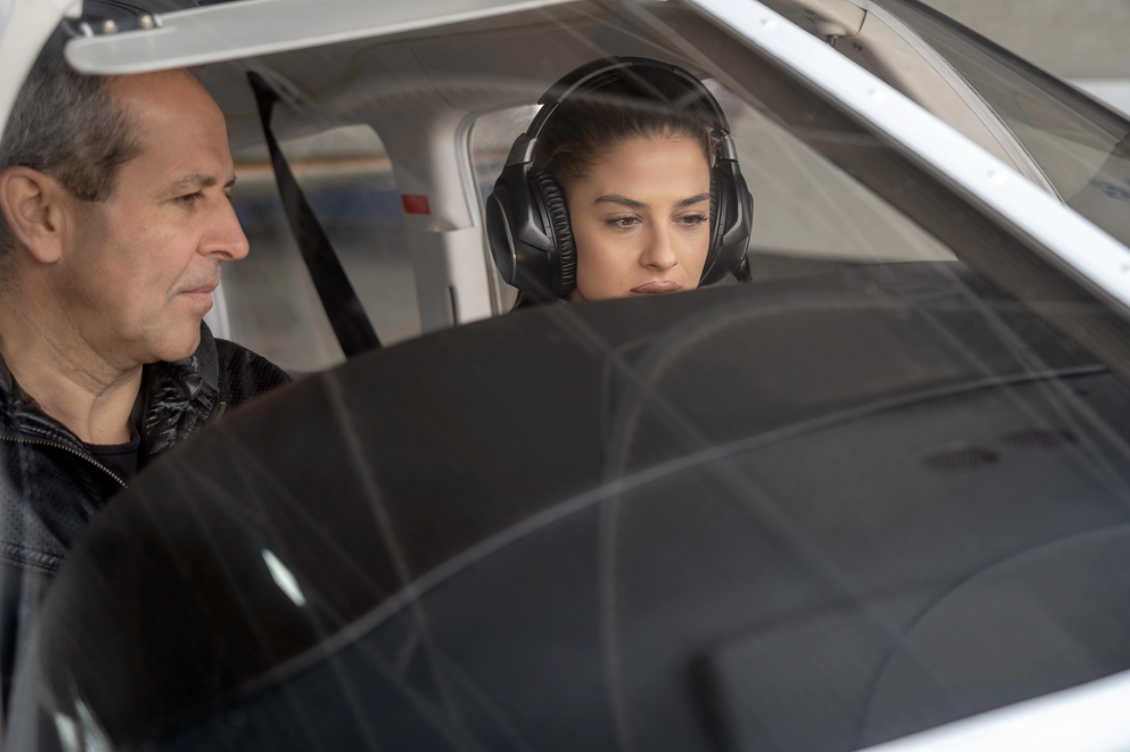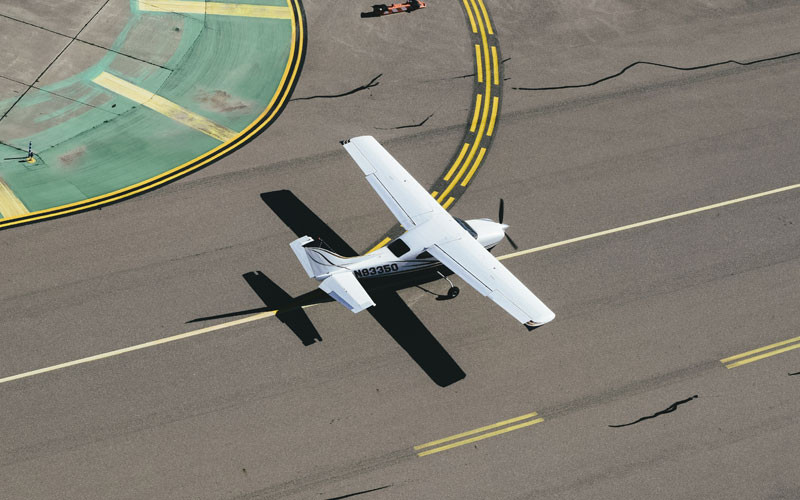Posted by Katie A. on Jun 16th 2025
Choosing a flight school can be a daunting task, but selecting the type of school, FAR Part 61, and FAR Part 141 shouldn’t be. These options can influence your training experience, timeline, flexibility, and even cost.
FAR stands for Federal Aviation Regulations, a comprehensive set of rules established by the Federal Aviation Administration (FAA) to govern all aspects of civil aviation in the United States. These regulations are organized into numbered “Parts,” each addressing a specific category of aviation operations.
- Part 61 outlines the requirements for pilot certification through a more flexible, student-paced structure.
- Part 141 defines a more structured, FAA-approved training program typically offered by certified flight schools with formal syllabi.
Understanding the differences between these two FAA-regulated training structures is crucial to tailoring your aviation journey, whether you’re flying for fun or forging a career in the skies. Here’s a breakdown of each to help you determine which might best align with your personal or career aviation goals.
Before enrolling, ask yourself:
- Are you training full-time or balancing a day job?
- Is this a career path or just a personal goal?
- Do you thrive in accelerated programs or prefer flexible pacing?
- Are you seeking a large, structured school or a more personalized setting?
- Are you comfortable managing your own study schedule?
Your answers to these questions are crucial in deciding between a FAR Part 61 or Part 141 training program.
FAR Part 61 Flight Schools: Flexibility and Customization

FAR Part 61 schools are ideal for students seeking flexibility and convenience. These schools are generally smaller, often located at local airports, and tend to offer one-on-one instruction tailored to the student’s schedule and pace. Many students and instructors at these schools are part-time, which makes them a good fit if you’re juggling other responsibilities like a full-time job.
Benefits of Part 61 Schools
- Custom lesson plans: Instructors can tailor their training to your pace, focusing on areas where you need more help.
- Instructor choice: You often get to pick your instructor, and switching is relatively easy.
- Smaller school settings: These schools are typically found at local airports.
Considerations for Part 61 Schools
- Self-discipline is essential. You are in charge of managing your own progress and staying current with study and practice.
- Cost variability: While initially more affordable, the flexible pace may lead to higher overall costs if training drags out over a period of time.
- Lacks the strict structure of Part 141, which can be a drawback for some.
- Takes longer to qualify for commercial roles (requires 250 flight hours vs. 190 under Part 141).
Recommended Materials
- Jeppesen Private Pilot Kit - FAR Part 61: A premium training kit tailored for flexible, self-paced learners under Part 61. Includes a structured combination of textbooks, a flight bag, syllabus, and navigation tools that align with Jeppesen’s industry-acclaimed training program.
- ASA Complete Private Pilot Kit - FAR Part 61: Designed with the independent learner in mind, this kit features a robust set of study guides, logbooks, and training tools to support students' training outside of a formal ground school environment.
- Jeppesen Instrument/Commercial Kit - FAR Part 61: Ideal for Part 61 students advancing their ratings, this all-in-one kit prepares you for both instrument and commercial training with a detailed syllabus and full suite of Jeppesen’s trusted resources.
FAR Part 141 Flight Schools: Structure and Speed

In contrast, Part 141 programs are highly structured and FAA-audited. Ideal for students training full-time with a clear goal of entering a professional aviation career. These schools are typically larger and may require relocation depending on your area. They follow a strict curriculum designed for accelerated learning and are typically found at larger, more formal institutions.
Benefits of Part 141 Schools
- Faster completion: These programs are streamlined, which can help you earn your certifications more quickly.
- Restricted ATP eligibility: If you're aiming for the airlines, graduating from a Part 141 school (with 60 credit hours) can allow you to earn a Restricted ATP certificate with just 1,000 flight hours instead of 1,500.
- Consistency: The structured syllabus ensures each student receives standardized training.
Considerations for Part 141 Schools
- Less flexibility: You must adhere to the curriculum timeline and assigned instructors.
- Higher upfront costs: Although more expensive initially, efficient completion may save money over time.
Recommended Training Kits for Part 141 Students
- Jeppesen Private Pilot Kit - FAR Part 141: The foundational training package for new students, aligned with Jeppesen’s industry-standard syllabus. A perfect start for anyone enrolled in a structured, full-time aviation program. It mirrors the FAA-approved syllabus and includes all the materials necessary to meet the rigorous standards of Part 141 instruction.
- Jeppesen Instrument/Commercial Part 141 Kit: A comprehensive kit tailored for students pursuing their instrument rating and commercial pilot certification under Part 141. Includes textbooks, manuals, and training accessories designed for a seamless continuation from private pilot training.
- ASA Private Pilot Flight School Kit - Part 141: Ideal for flight schools and students alike, this ASA kit includes essential materials like the FAR/AIM, E6B flight computer, sectional charts, and textbooks—all coordinated with an FAA Part 141-approved curriculum.
Choose the Path That Fits You Best
There’s no one-size-fits-all approach to flight training. Whether you choose the flexibility of Part 61 or the structure of Part 141, what matters most is how well the program fits your goals, learning style, and lifestyle. Both paths lead to the same pilot certification, and the sky truly is the limit, whichever runway you take to get there.
Ensure you're equipped with the right manuals, tech tools, and safety gear. If you’re ready to begin your flight journey, explore all of our aviation training materials to help you get started.

